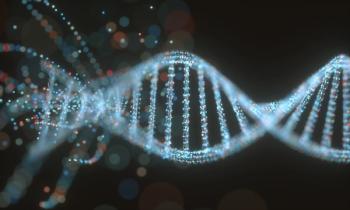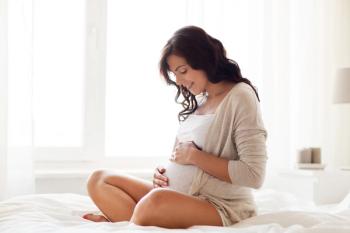
Estrogen-only hormone therapy lowers young-onset breast cancer risk
A recent study found that unopposed estrogen therapy reduces young-onset breast cancer risk, while combined estrogen-progestin therapy increases it.
The odds of breast cancer in women aged under 55 years are reduced by treatment with unopposed estrogen hormone therapy (E-HT) vs no hormone therapy, according to a recent study published in The Lancet Oncology.1
Differing risks based on hormone type
In comparison, the data found increased breast cancer risk in women treated with estrogen plus progestin hormone therapy (EP-HT) vs no hormone therapy. This highlighted different influences on breast cancer risk from 2 common types of hormone therapy, indicating potential guidelines for clinical recommendations about hormone therapy use in young women.1
“Our study provides greater understanding of the risks associated with different types of hormone therapy, which we hope will help patients and their doctors develop more informed treatment plans,” said Katie O’Brien, PhD, lead author from the National Institute of Health’s National Institute of Environmental Health Sciences (NIEHS).1
Hormone therapy use in premenopausal women
The trial was conducted to assess the link between exogenous hormones and breast cancer in young women.2 According to investigators, this population may undergo hormone therapy as management of premenopausal symptoms or following gynecological surgery.
Women with hysterectomy are the only population recommended to receive E-HT because of the link with uterine cancer risk.1 However, oophorectomy may lead to E-HT or EP-HT use, alongside menopause symptom onset.
Global data and risk assessment
Data was obtained from 10 to 13 prospective cohorts in North America, Asia, Europe, and Australia. Participants underwent follow-up to identify breast cancer incidence while aged under 55 years.2
Hazard ratios (HRs), were determined through cohort-stratified, multivariable-adjusted Cox proportional hazards regression. Additionally, investigators evaluated risk differences based on cumulative risk until age 55 years.2
Hormone therapy usage and outcomes
There were 459,476 women aged 16 to 54 years included in the analysis. Young-onset breast cancer was reported in 2% of these patients across a median of 7.8 years. Hormone therapy was reported in 15%, with EP-HT reported in 6% and E-HT in 5%. These were the 2 most common types of hormone therapy used in the study cohort.2
In non-users, a cumulative risk of 4.1% was reported for breast cancer. Incident young-onset breast cancer risk was not significantly impacted by hormone therapy overall with an HR of 0.96. However, E-HT use was linked to a decreased risk, with an HR of 0.86.2
For EP-HT use, the risk was increased vs no hormone therapy, with an HR of 1.10. When EP-HT was used for over 2 years, the HR increased to 1.18, highlighting positive associations with long-term use. Similarly, and HR of 1.15 was reported for EP-HT use in women without hysterectomy or bilateral oophorectomy.2
Subtype-specific risks and clinical implications
Similar links were reported for all breast cancer subtypes. However, EP-HT use had more significant associations with estrogen receptor-negative and triple-negative disease than other subtypes, with HRs of 1.55 and 1.50, respectively.2
Overall, the results indicated reduced odds of young-onset breast cancer from E-HT but increased odds from EP-HT. Investigators concluded this data can be used to develop clinical guidelines for hormone use in younger women.
“Women and their health care providers should weigh the benefits of symptom relief against the potential risks associated with hormone therapy, especially EP-HT. For women with an intact uterus and ovaries, the increased risk of breast cancer with EP-HT should prompt careful deliberation,” said Dale Sandler, PhD, senior author and NIEHS scientist.
References
- Breast cancer risk in younger women may be influenced by hormone therapy. National Institutes of Health. June 30, 2025. Accessed July 8, 2025. https://www.eurekalert.org/news-releases/1088954?
- O’Brien KM, House MG, Goldberg M, et al. Hormone therapy use and young-onset breast cancer: a pooled analysis of prospective cohorts included in the Premenopausal Breast Cancer Collaborative Group. The Lancet Oncology. 2025;26(7):911-923. doi:10.1016/S1470-2045(25)00211-6
Newsletter
Get the latest clinical updates, case studies, and expert commentary in obstetric and gynecologic care. Sign up now to stay informed.











